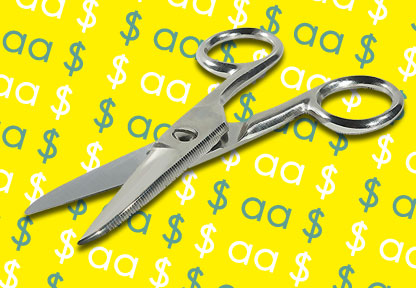Unlike traditional on-premise software, SaaS software looks simple and cheap at first glance. That line of thinking is true to an extent. However, there’s a dark side to the fact that it’s easy to buy software as a service: you can buy too much and waste money. Fortunately, you can use SSO software to get your SaaS expenses under control.
Three Factors to Consider When Managing Your SaaS Expenses
Before you sharpen your pencils and start cutting away at SaaS expenses, you need to think through a few factors first. Skip these questions, and you’re more likely to harm the business in your effort to save money.
1. What’s the SaaS Total Cost?
In large companies, getting a clear answer to this question is tricky. For example, the company may allow individual employees to purchase SaaS by credit card and reimburse them afterward. Such cost data may not be part of your finance system. Moreover, you’ll want to consider non-software SaaS costs. If you pay for training, certifications, or consultants to help you use a given SaaS product, take note of those expenses as well.
2. What’s the SaaS Value?
Understanding value tends to be overlooked by financial professionals eager to cut costs because it can be harder to measure. You can assess SaaS value using a few techniques. You can survey employees and ask them to rank your company’s SaaS tools in order of importance. You can also track usage using Avatier’s SSO tool. For example, if you find out that 80% of the IT team signs into a given SaaS tool every day, that particular software probably has considerable value. Finally, ask about substitutions. If taking away a SaaS tool required staff to work much longer hours to complete the same task manually, that finding should be considered as part of the value.
3. What Risks (e.g., Phishing) Does the SaaS Mitigate or Introduce to Your Company?
Every part of your company’s environment and practices will increase or decrease your risk profile. A robust identity and access management platform such as Identity Anywhere will help to reduce the risk of inactive user accounts and other problems such as phishing. On the other hand, some IT development tools can introduce much greater IT security risk exposures. Further, you may want to question the maturity of a SaaS vendor. Some newer companies may not have been hacked yet, so they may lack motivation to invest in security.
We can’t help you define the cost part of the equation; that’s a question best left to your company’s accountants. We can help you with value and risk aspects of reducing software as a service (SaaS) costs.
The 6-step Process to Lower SaaS Expenses with SSO
Let’s assume you’re aiming to reduce your SaaS expenses by 10%. That’s a reasonable goal to guide this analysis. If your SaaS expenses and usage have never been reviewed in depth, you may be able to cut more expenses.
1. Start with the Largest SaaS Vendors by Cost
If your company has more than 10 SaaS products, you probably won’t be able to analyze every SaaS product. Therefore, we recommend focusing your efforts on the top 5-10 SaaS vendors by cost. If you don’t have cost information, reach out to finance for further information.
2. Confirm Single Sign-on Coverage for Those SaaS Products
Next, you need to confirm that SaaS products you’re analyzing are covered by your Single Sign-on (SSO) solution. If your SSO software isn’t up to the task of tracking SaaS usage, implement Avatier’s SSO solution. Some users can achieve a 30% SaaS cost reduction.
3. Review 90 Days of Sign-on Activity
Collect sign-on data for three months to gain a clear picture of SaaS usage patterns. If you use a shorter period of usage data, the analysis may be skewed by vacations, time off, and other variations. The 90-day window also represents a quarter of a year. If the software isn’t used for 25% of the year, it’s easier to make a case for an expense reduction.
4. Measure the Cost of Non-usage
Compare the SSO data with the total number of user accounts to determine usage. For instance, if you have 1,000 seats for your CRM usage, and only 650 users signed in over three months, you can then focus on the remaining 350 users. If each license costs $1,200 per year, those inactive users cost the organization about $420,000 with nothing to show in return.
5. Review the SaaS Agreement for Reduction Opportunities
Your opportunity for SaaS expense reduction will also depend upon the nature of the SaaS contract you have. Best-case scenario: there’s no contract, and you can reduce your usage immediately. The worst-case scenario would be a contract with minimum usage and penalties for reduction. If you’re unsure where to find the contract, talk to your company’s legal department.
6. Propose the SaaS Reduction to Management
Now that you’ve gathered the information on SaaS usage and costs, you’re ready to propose to senior management. We recommend your proposal contain the following elements:Why: Start with why you’re delivering this recommendation. (For example, to support the company’s annual profit goal)
Recommendation: Make specific recommendations for SaaS cost reduction (e.g., reduce CRM usage by 10% over the next three months) and how much money this will save.
Findings: Summarize the data you found and any critical assumptions you made (e.g., the 90-day usage model).
Assuming you win management support for the change, your next step is to communicate the planned change internally. Once that’s completed, you can reach out to the SaaS vendors to reduce your usage costs.




